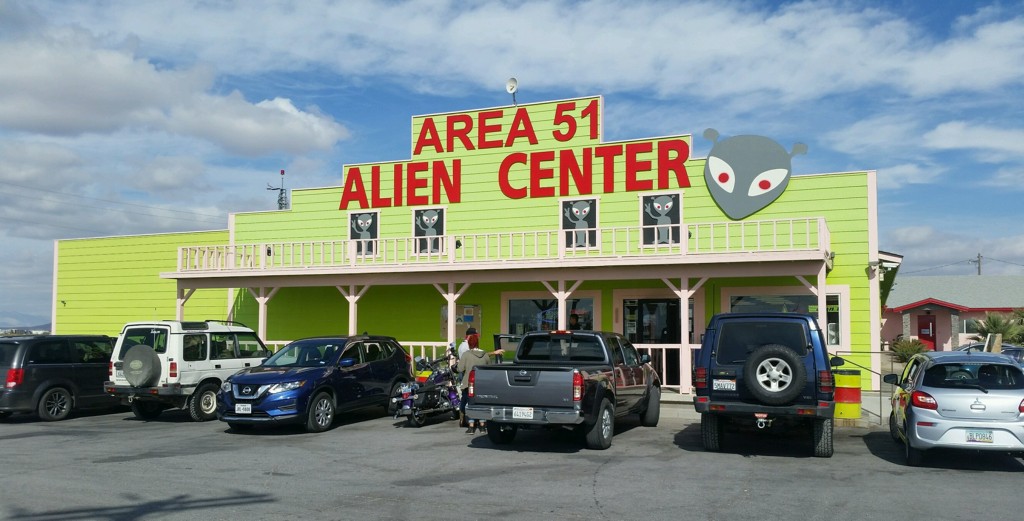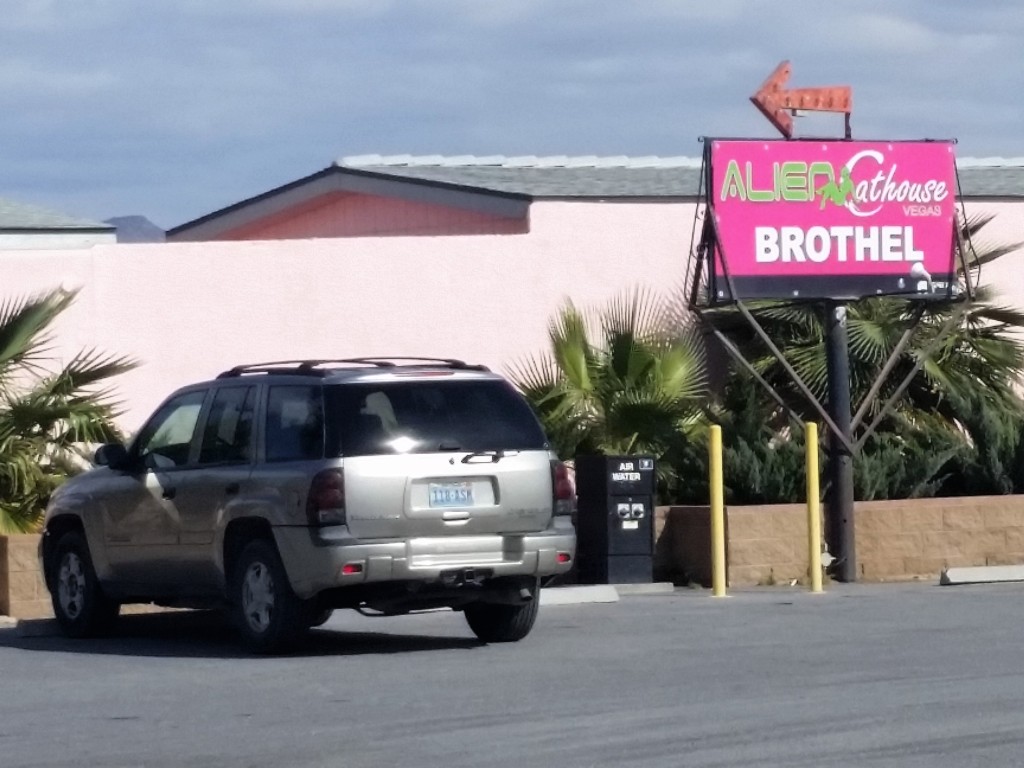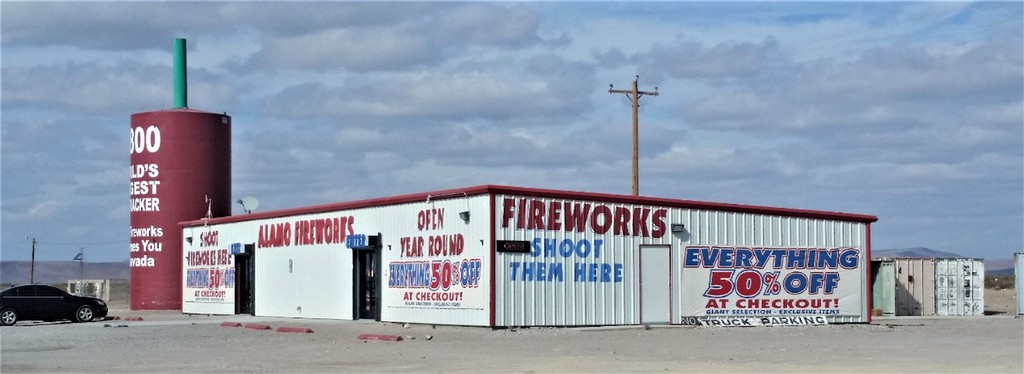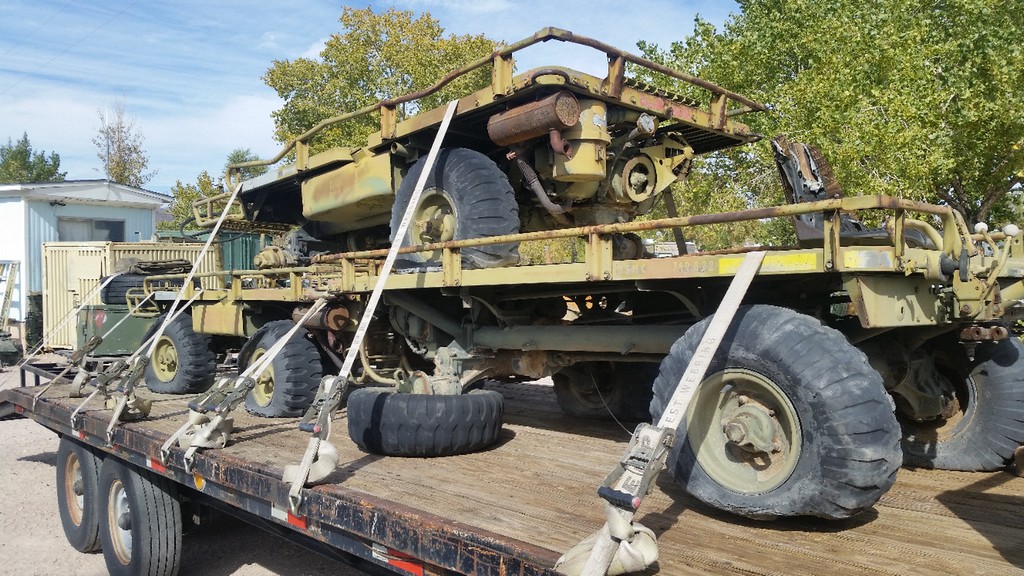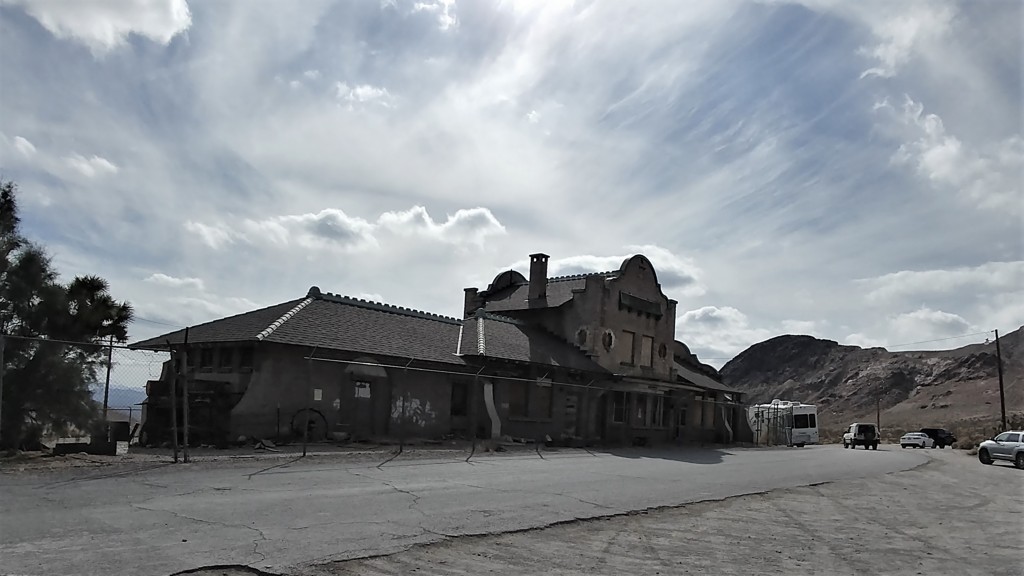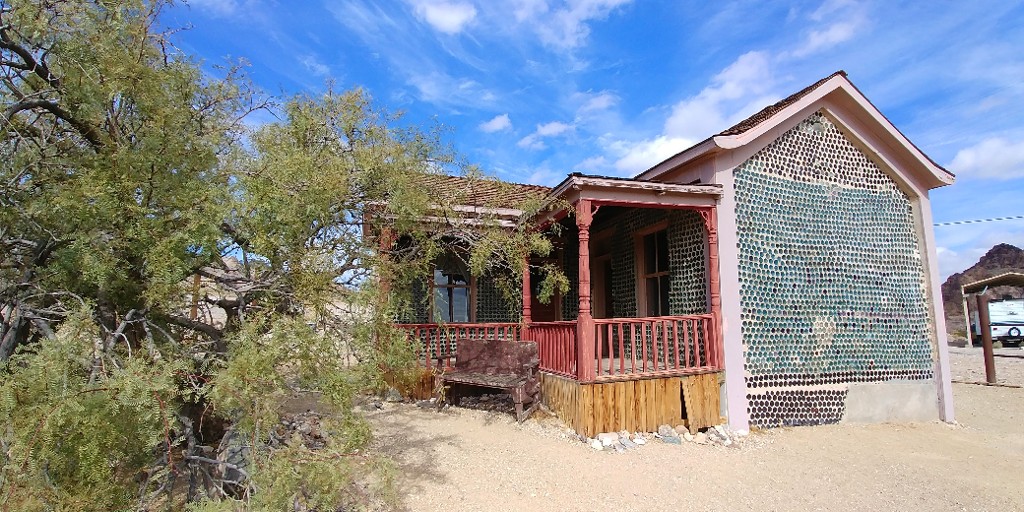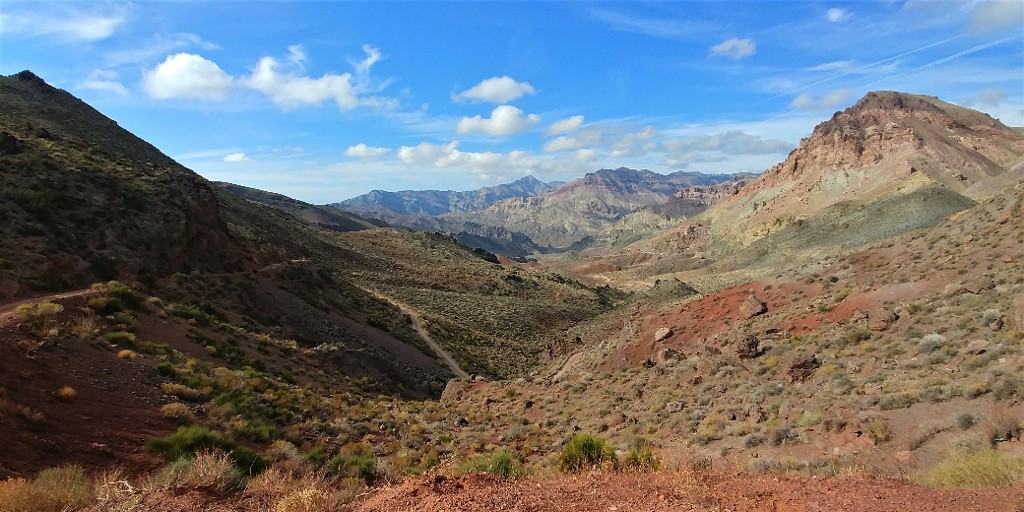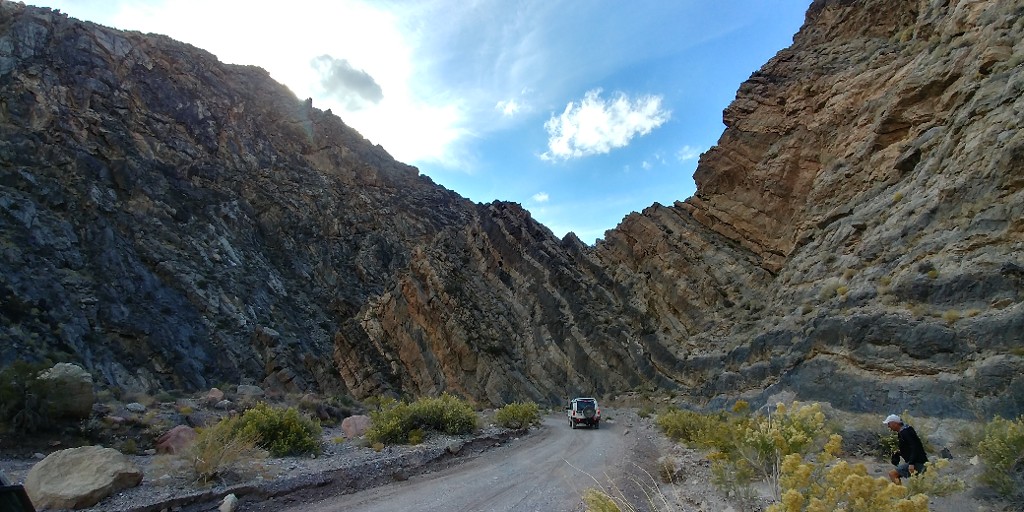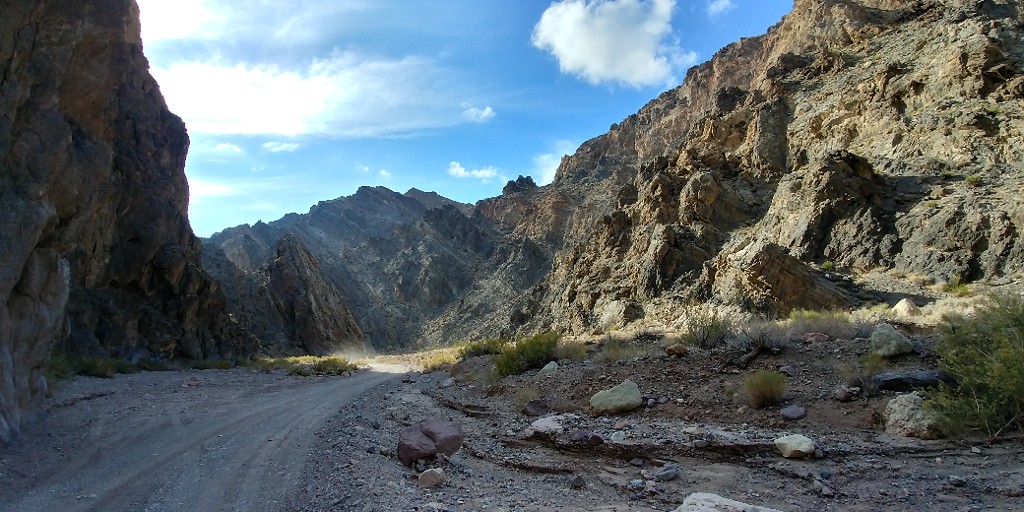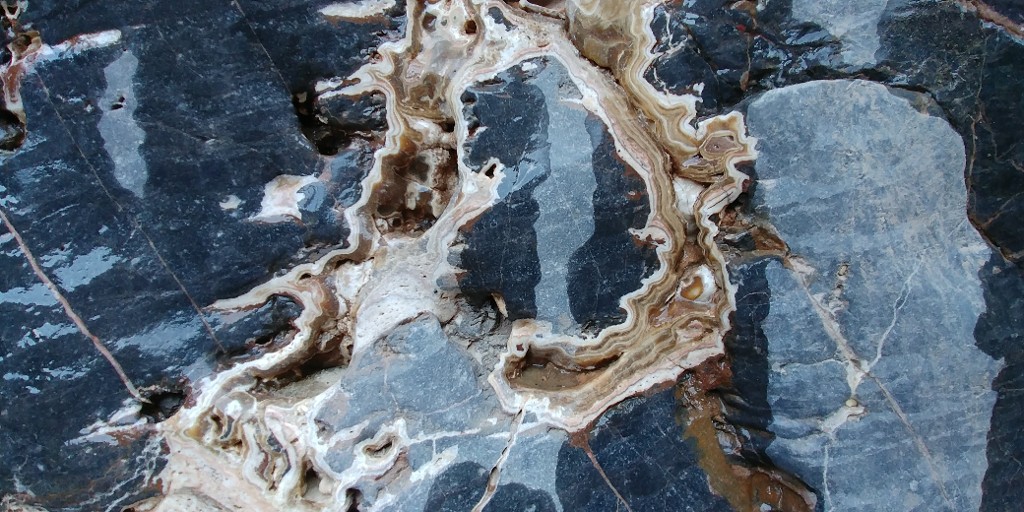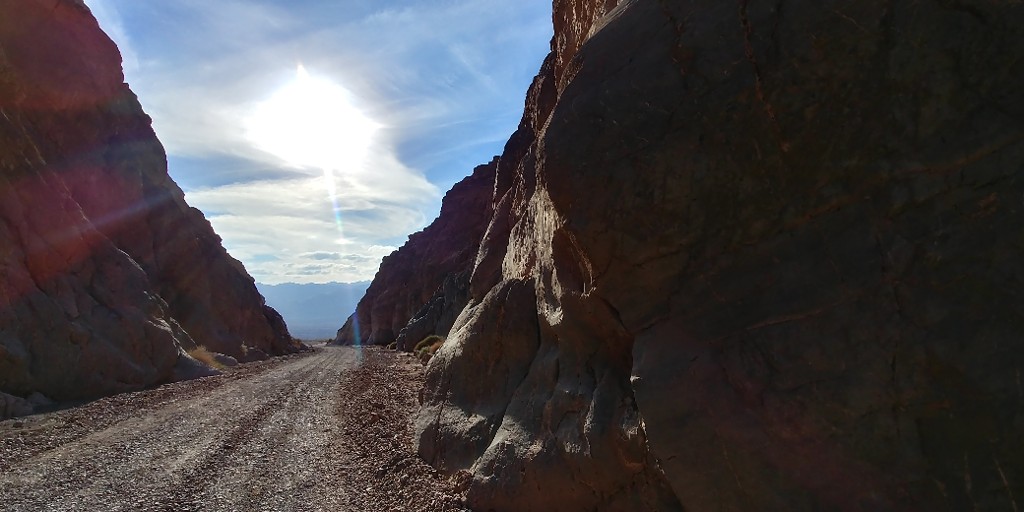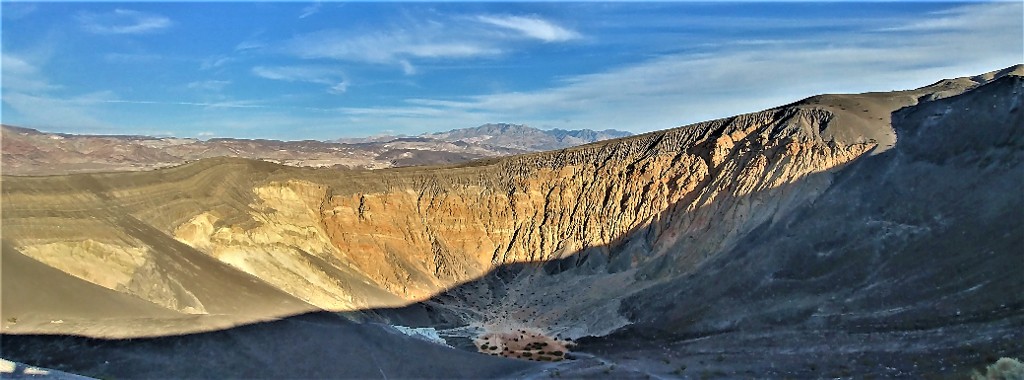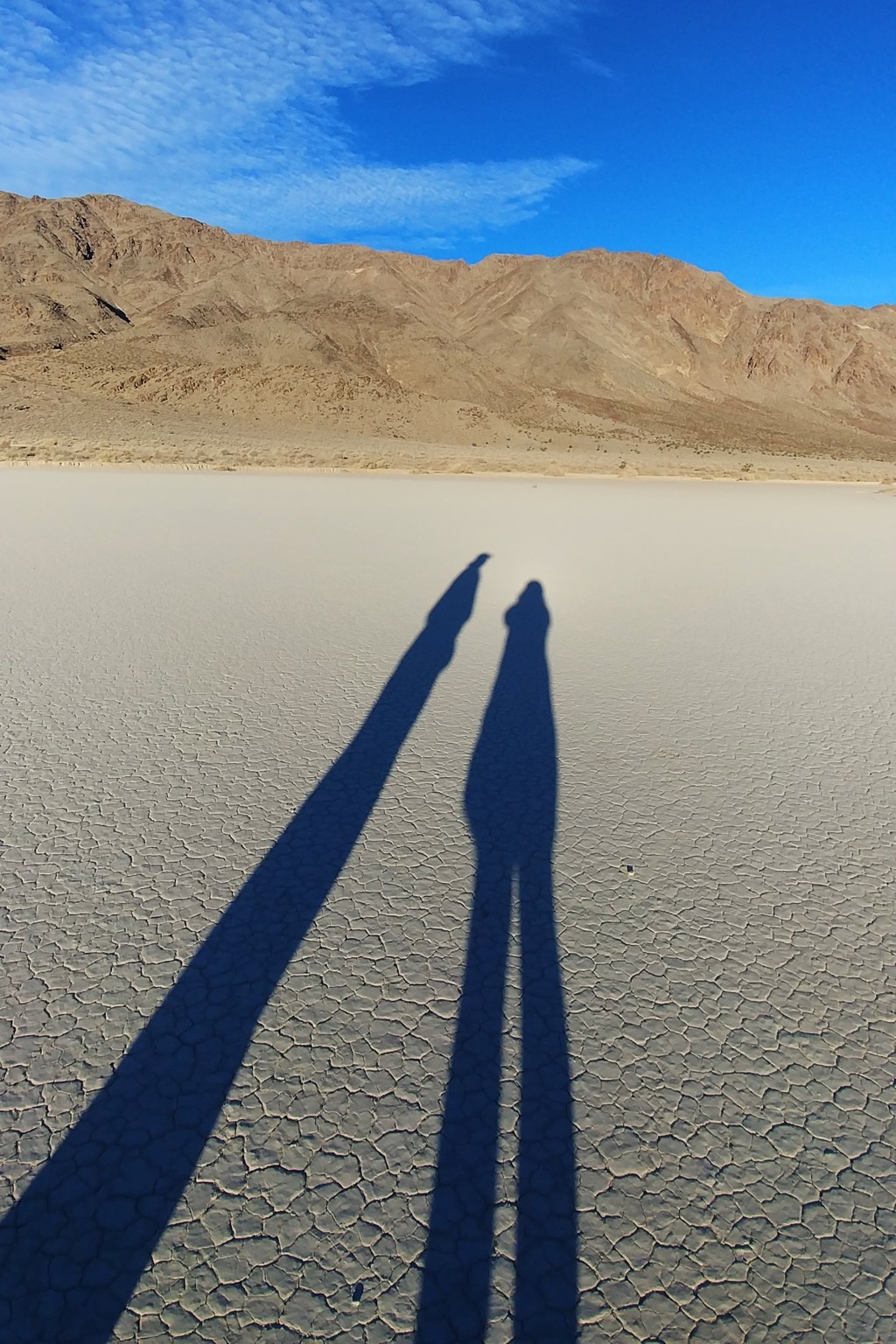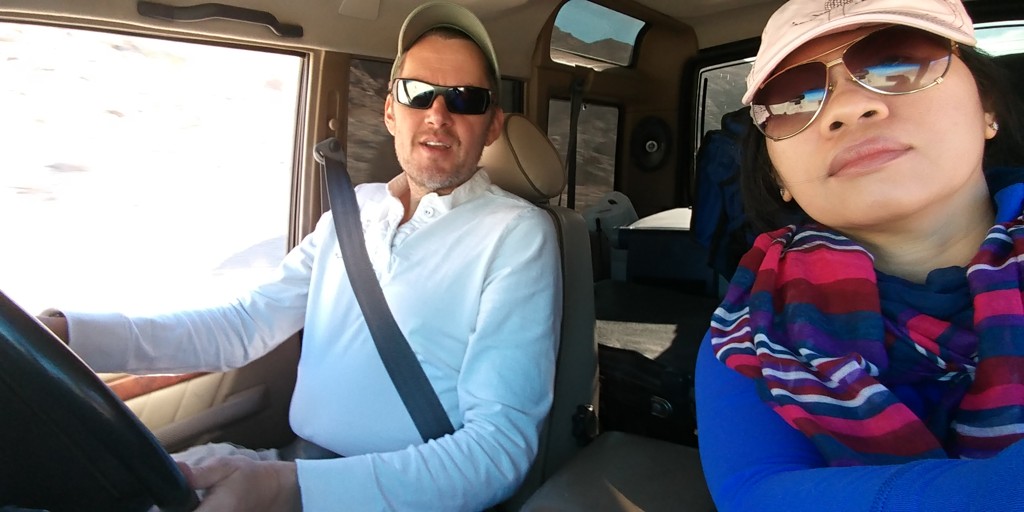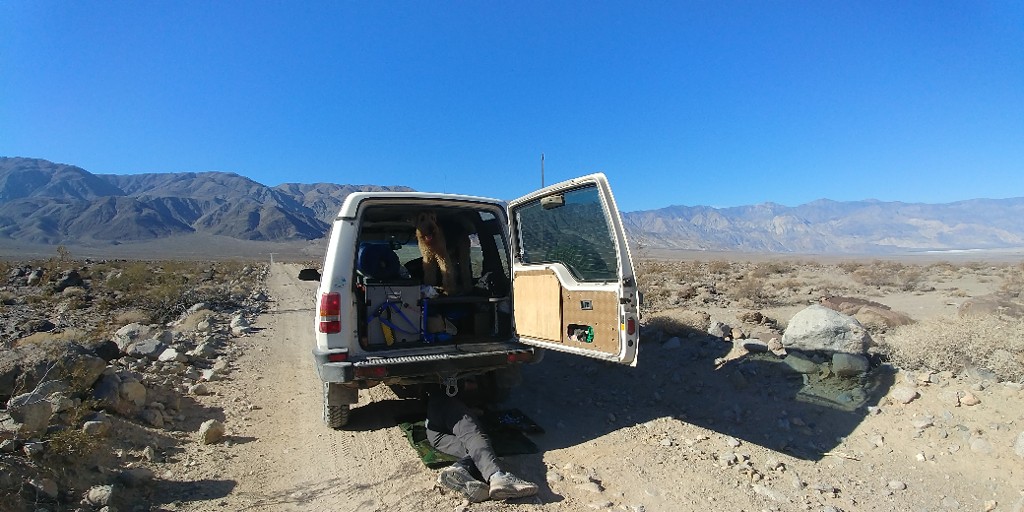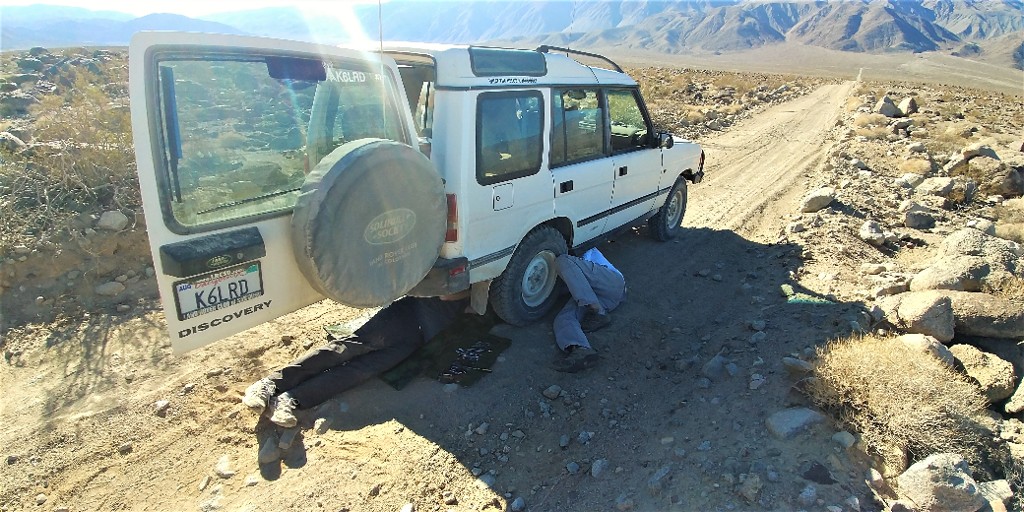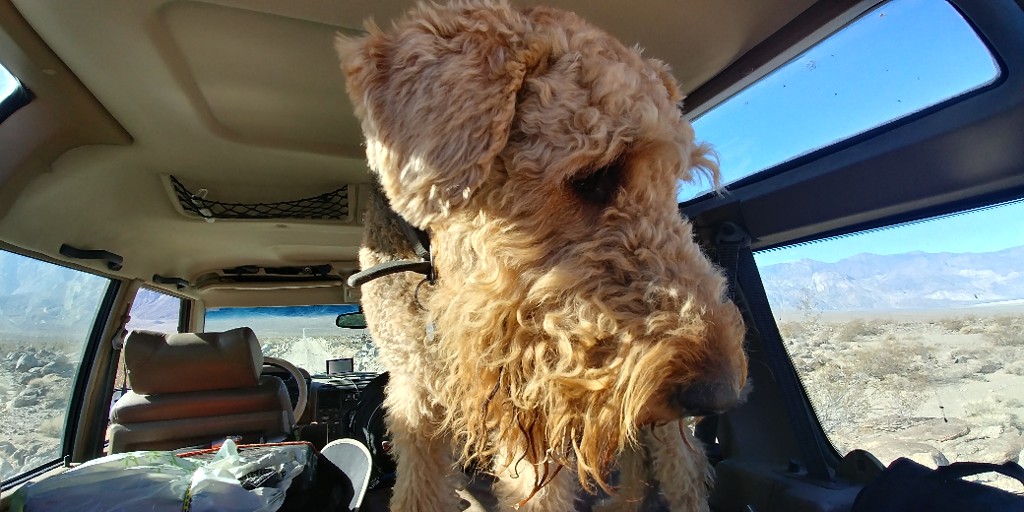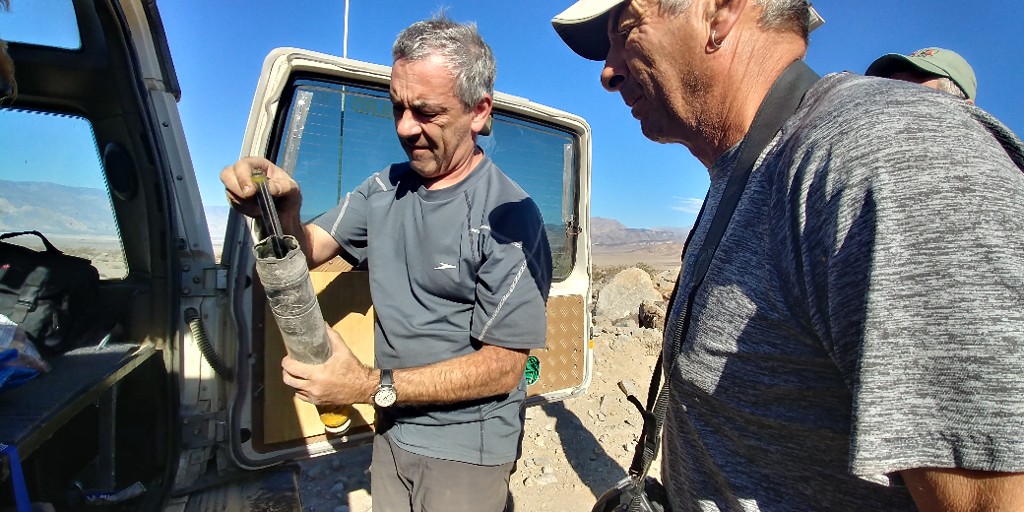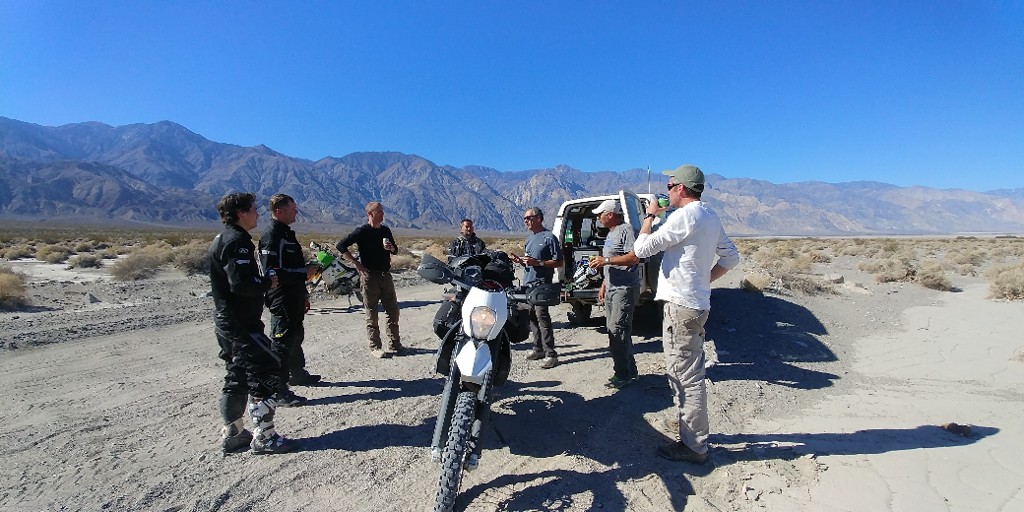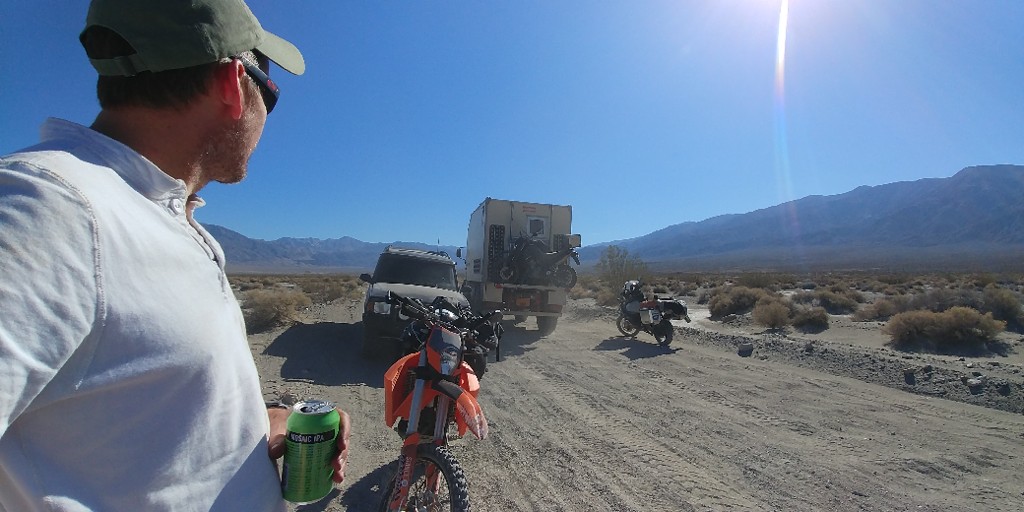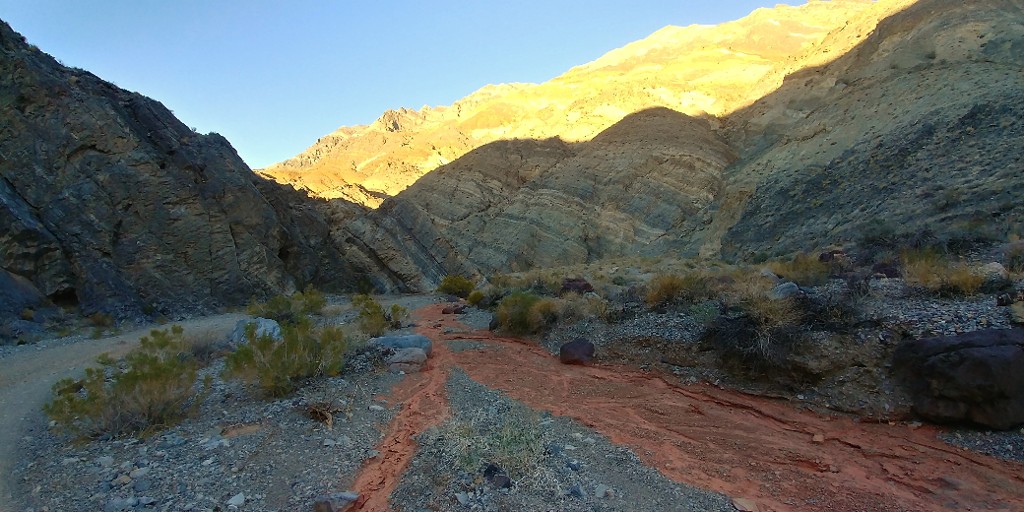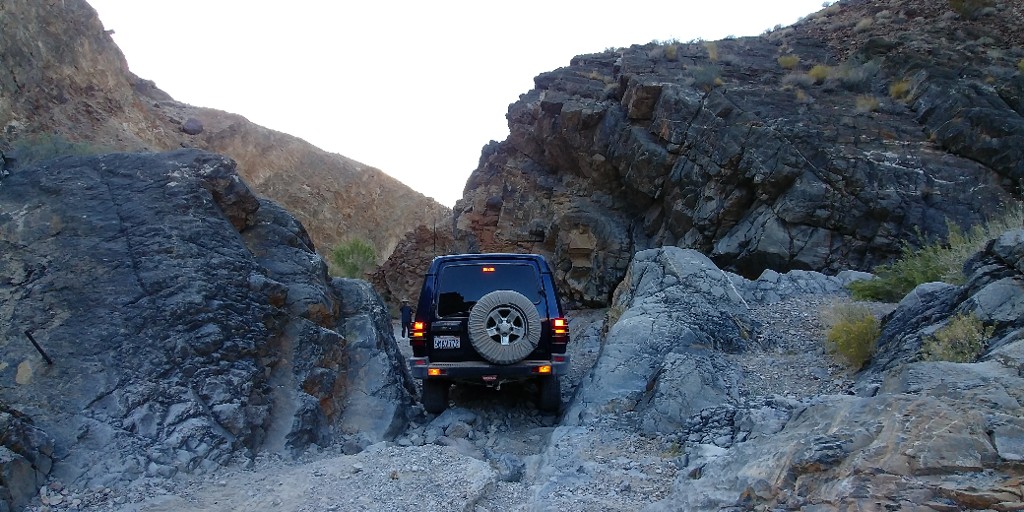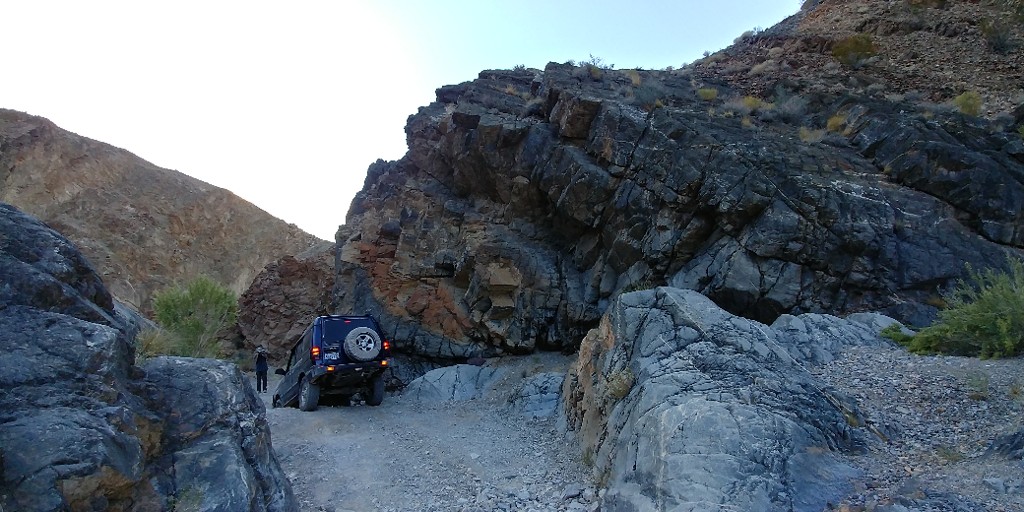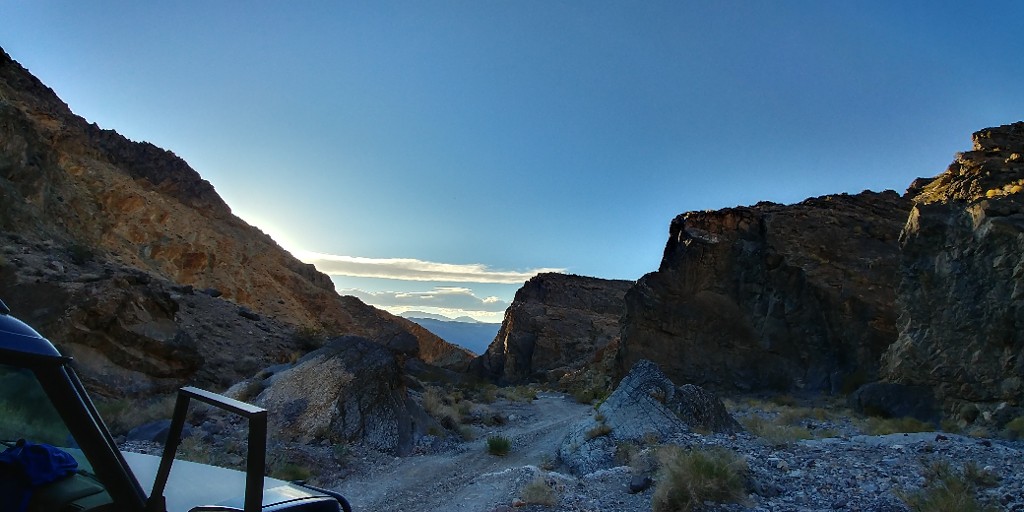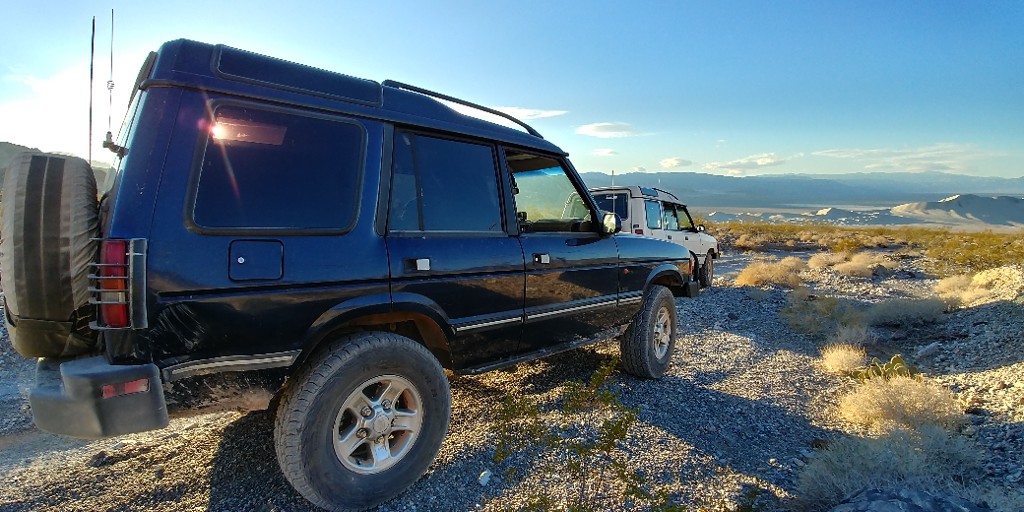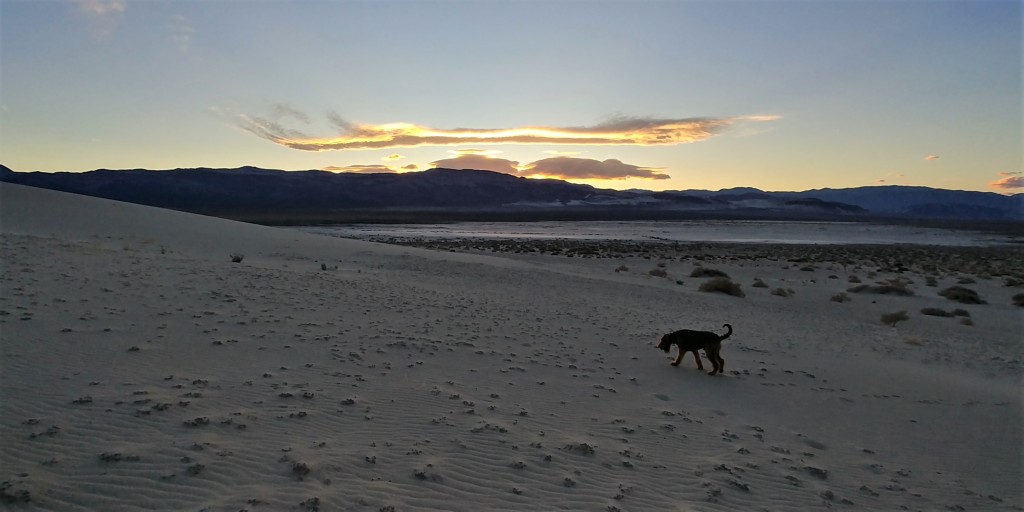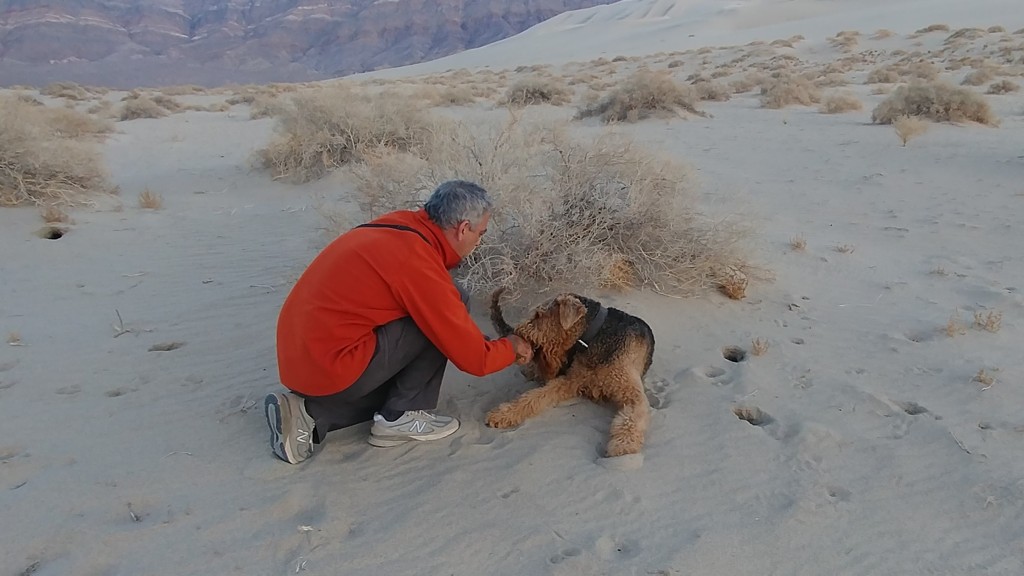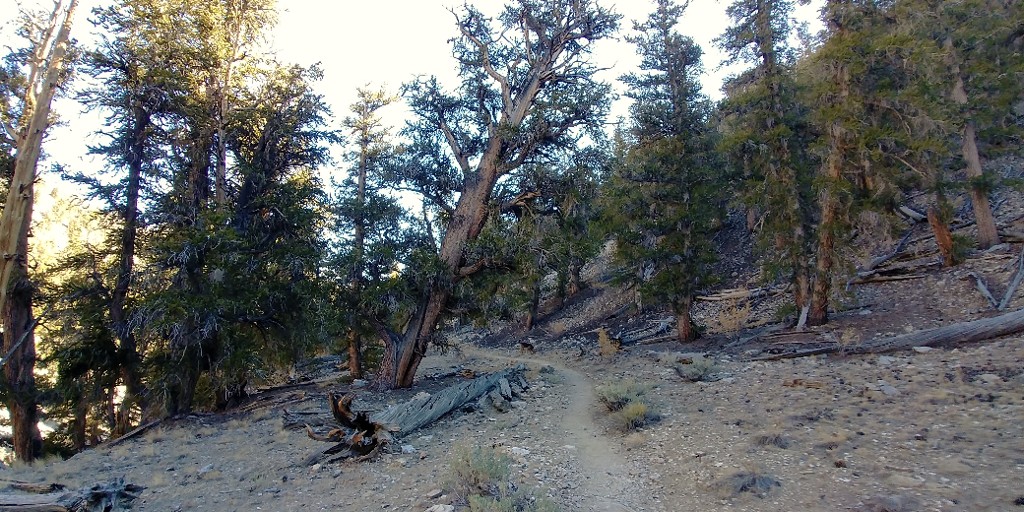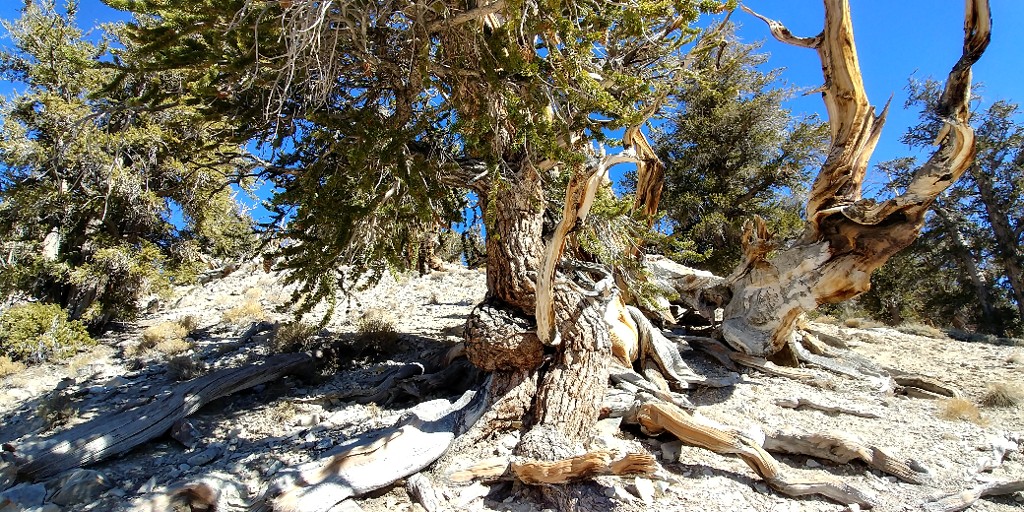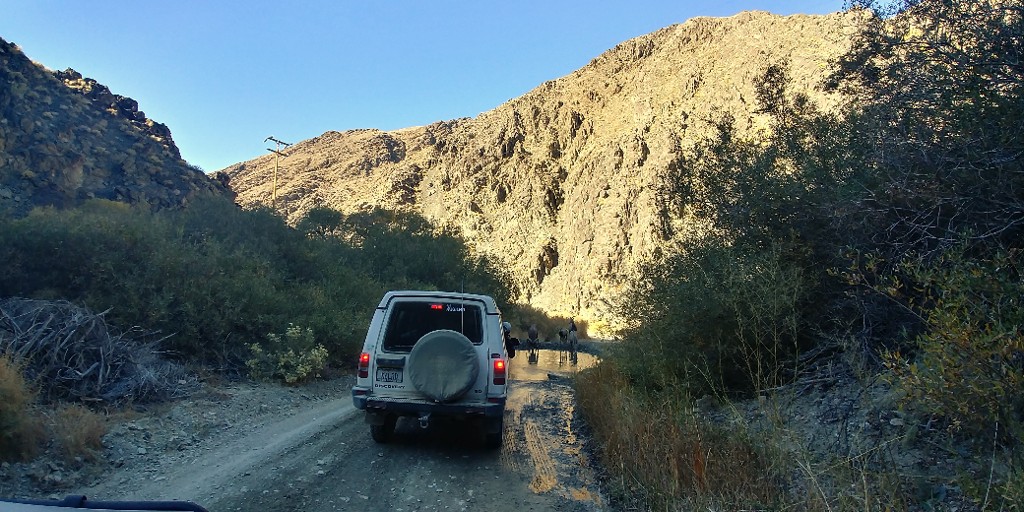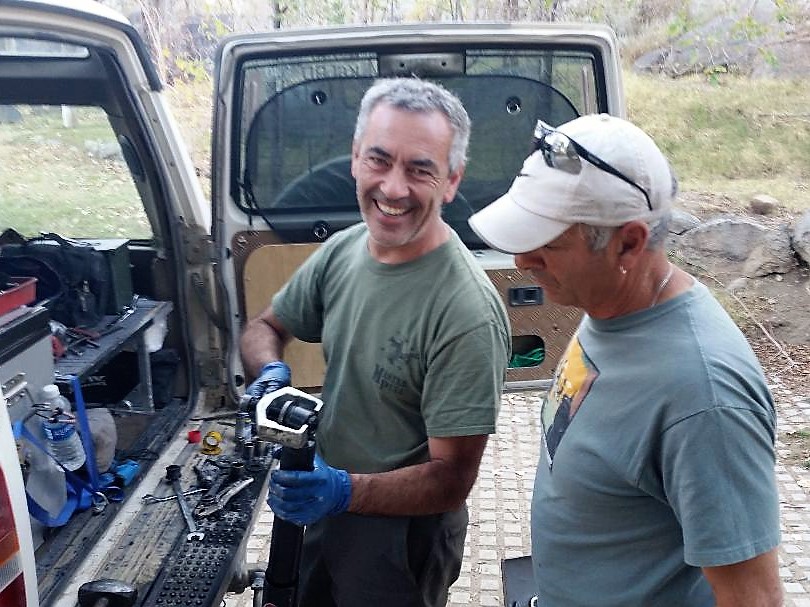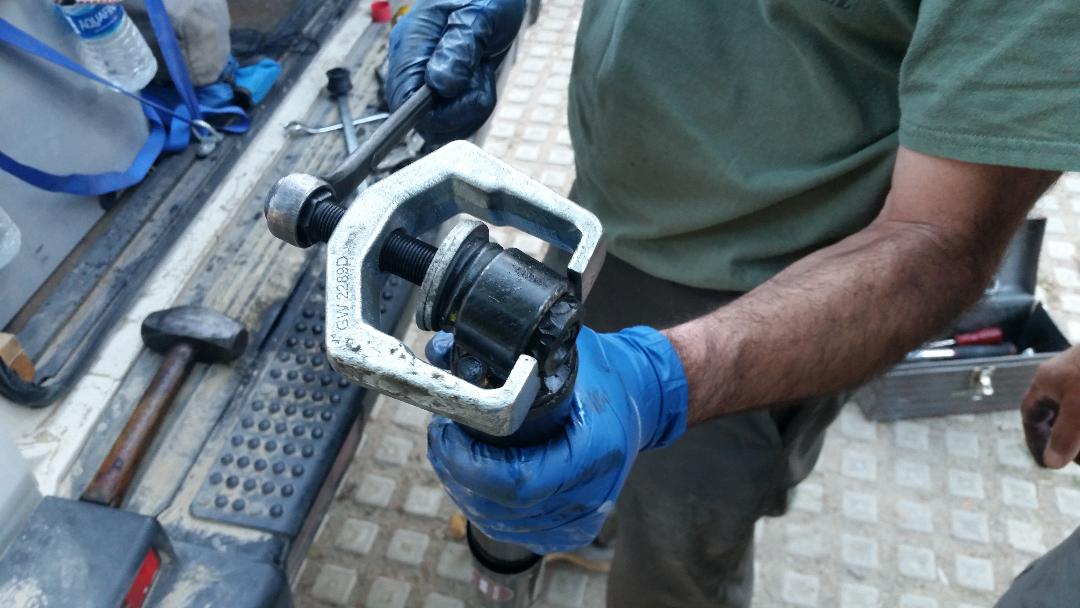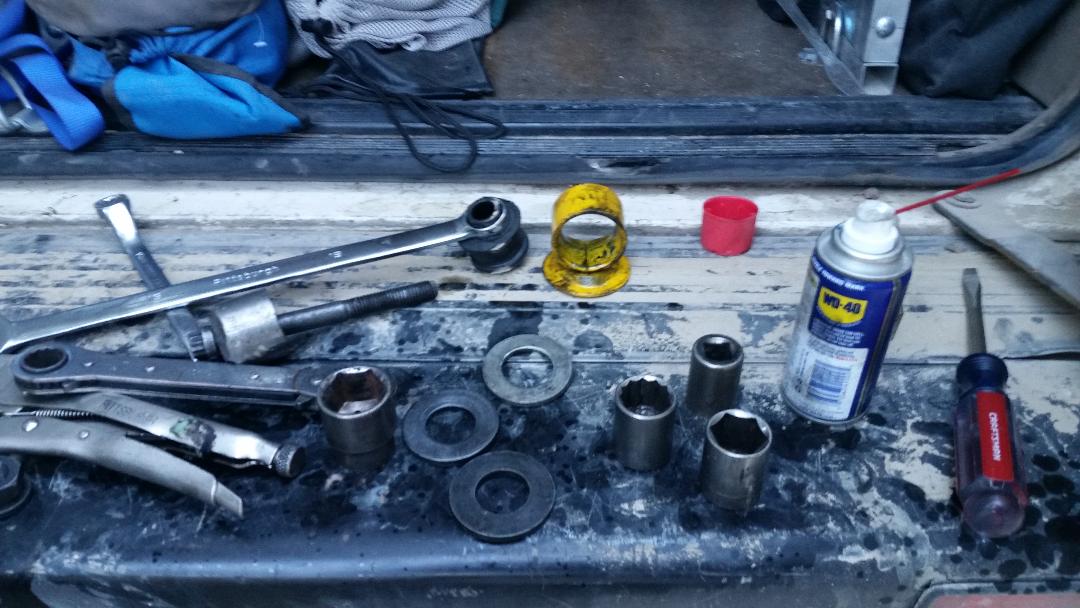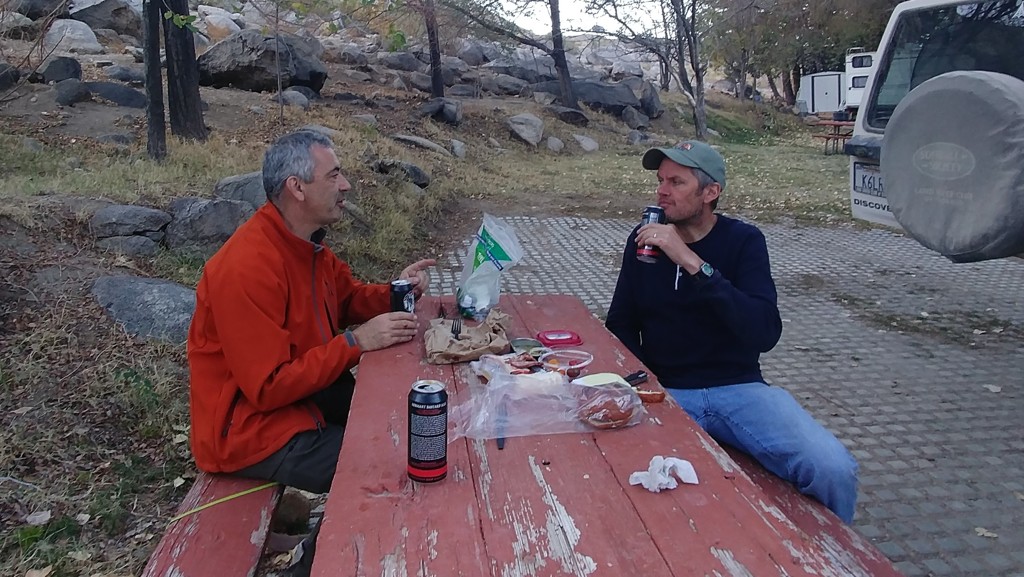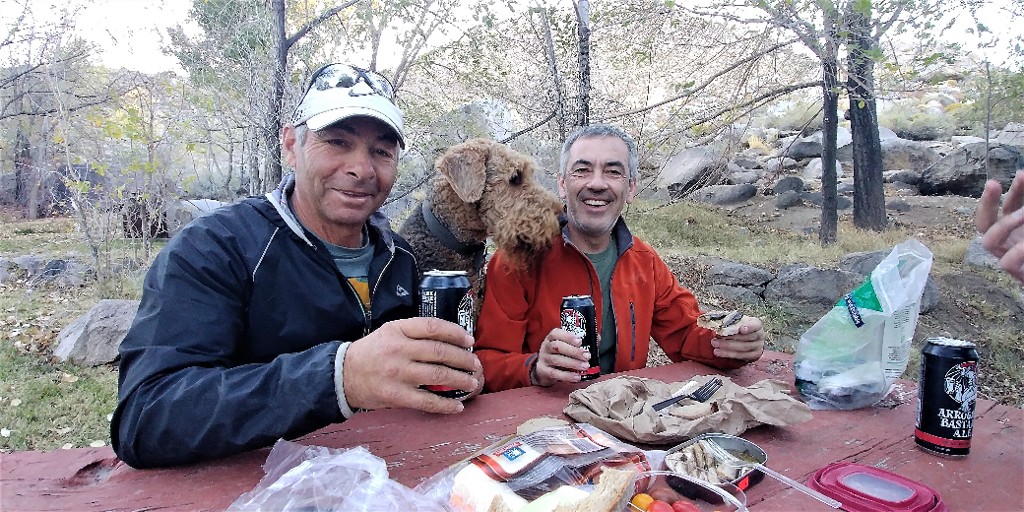You folks should be familiar with this particular drunken state when we start making travel plans.
Last time we've achieved this state rather quickly, right after we completed the Rubicon trail. We were too tired to even contemplate going out for dinner, so we gravitated to the patio of a motel in Lee Vining, with beer and bourbon and whatnot, and fell into this groove in about an hour and a half. The only bright idea we could come up with was to repeat a weekend trip to Death Valley.
It should be said that my poor old gal of a Land Rover was not quite ready for new adventures after the 'Con. At least a couple of full weekends was put in towards rectification of things small and large, but eventually the road fever overcame the more-traditional weekend entertainment (like extra work).
Text messaging lit up.
- Let's go to Death Valley.
- When?
- In a couple of weeks.
- Ten-four. Any particular route?
And so on. At a certain point I remember that I probably should let my folks know that I might not be home for a couple of nights. And out of reach by cell phone. Yes, I will take the dog with me. Yes, we plan on sleeping in a tent. No, it won't be too cold. It won't be too hot, either. Spare parts and tools are still in the truck since Rubicon, no need to pack anything else.
Kind of like that.
I take the lack of promises to return to an empty house as a permission, and ponder the trip plan. Here's the disposition: we have three days total - taking off early Friday morning, have to be home by Sunday night come hell or high water. All there's to drive - about a thousand miles, out of which about 220 are off pavement (to be more precise, a grueling Death Valley washboard and rocks). This particular 220-mile stretch requires about 20 hours to drive, give or take, some of it requires low range, with altitudes ranging from about sea level to about 10 thousand feet above. Both vehicles are V8-powered Land Rovers with automatic transmissions, and there is not a single gas station on this route.
The last consideration bothers me a bit. Even after some effort to rein in gas consumption, I am not sure if that truck can idle for 20 hours on a tankful of gas, let alone to move under its own power. I own many five-gallon jerry cans, but a Discovery is not a very large vehicle, when two adults and a large dog are concerned.
We'll figure something out.
In addition to that, one of my good friends plans to cover the same route on his KTM bike, North to South - meaning I chose the South to North direction to make sure we meet. The fact that we plan on meeting in a desert spanning a little more than three thousand square miles doesn't bother me a bit. As long as we avoid paved roads, we'll meet.
Finally, I kiss my wife goodbye and hit the road.

A little rant about Death Valley.
This is a comment to Death Valley-related trip report on one of the Internet bulletin boards, loosely translated from Russian:
- 13 years ago on North Death Valley Road, in my Range Rover Classic the left rear brake dust shield worked itself loose, crumpled and jammed itself between one of the axle brackets and brake caliper. Fortunately, it didn't damage any of the brake lines. For this to happen, two 8-mm nylock nuts had to work themselves down about 10mm of thread - it only took 20 miles of washboard. Oh yes, and within two hours of this event we were under heavy snowfall at about 6000 feet above sea level. All on the same road.
- 11 years ago, on the same North Death Valley Road, we've watched a Chevy pickup depart Eureka Dunes area, with a couple and two dogs, and I caught myself thinking (a) this was likely the last vehicle on the road for at least the night, and (b) we only had about half a gallon of drinkable fluids for three of us, and two-thirds of that was wine. I filed away this thought and drove on. In about six miles we met the couple in the Chevy again: their auxilliary engine oil cooler hose worked itself lose, they missed the oil pressure warning light, and the engine seized. We ended up rope-towing them to the ranger shack about 25 miles away; fortunately there was a park ranger in it. At the time, there was no cell phone service pretty much anywhere in the Valley. Next morning, as if on purpose to reinforce the lesson, my Land Rover's lower radiator hose sprang a leak.
- 9 years ago we worked at the Southern half of China Lake Weapons Range, one mountain range away from Death Valley, and about an hour and a half drive from Ridgecrest. We decided to leave the engine running while we did our work at the site, to keep the cabin cool. Returned to Inyokern, and went for lunch. After lunch the engine wouldn't start - the battery showed about 5 volts across its terminals. Apparently, all these miles on the washboard shook the active layer off the battery's plates - the battery was completely dead and unchargeable.
- This time we met a sad owner of a diesel Ford Excursion with two very dead batteries at the Racetrack Playa - without cell phone service, about 20 miles from pavement and at least 100 miles from the nearest service station. The owner and his young son were on the fence of whether to spend a cold night inside the truck or hit a button of a satellite beacon so they could summon some very expensive help.
In this respect, we are lucky by only having one broken OME shock absorber (five months old, on a suspension with tall bumpstops and retained spring - so it has never been stretched or bottomed out). Whatever's good for Australian outback may not be good enough for Death Valley.
Here are some photos from our past trips to the Valley:
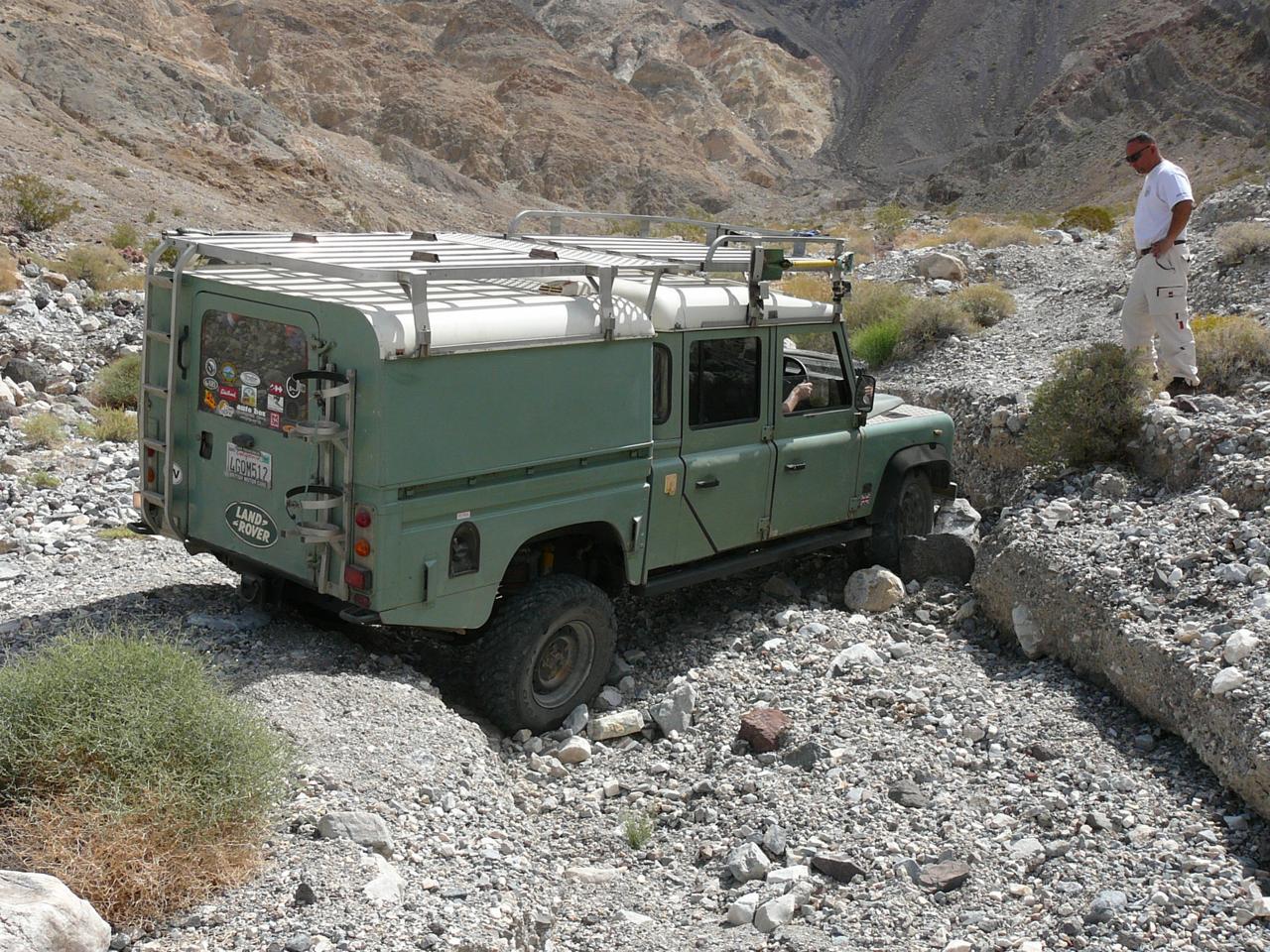
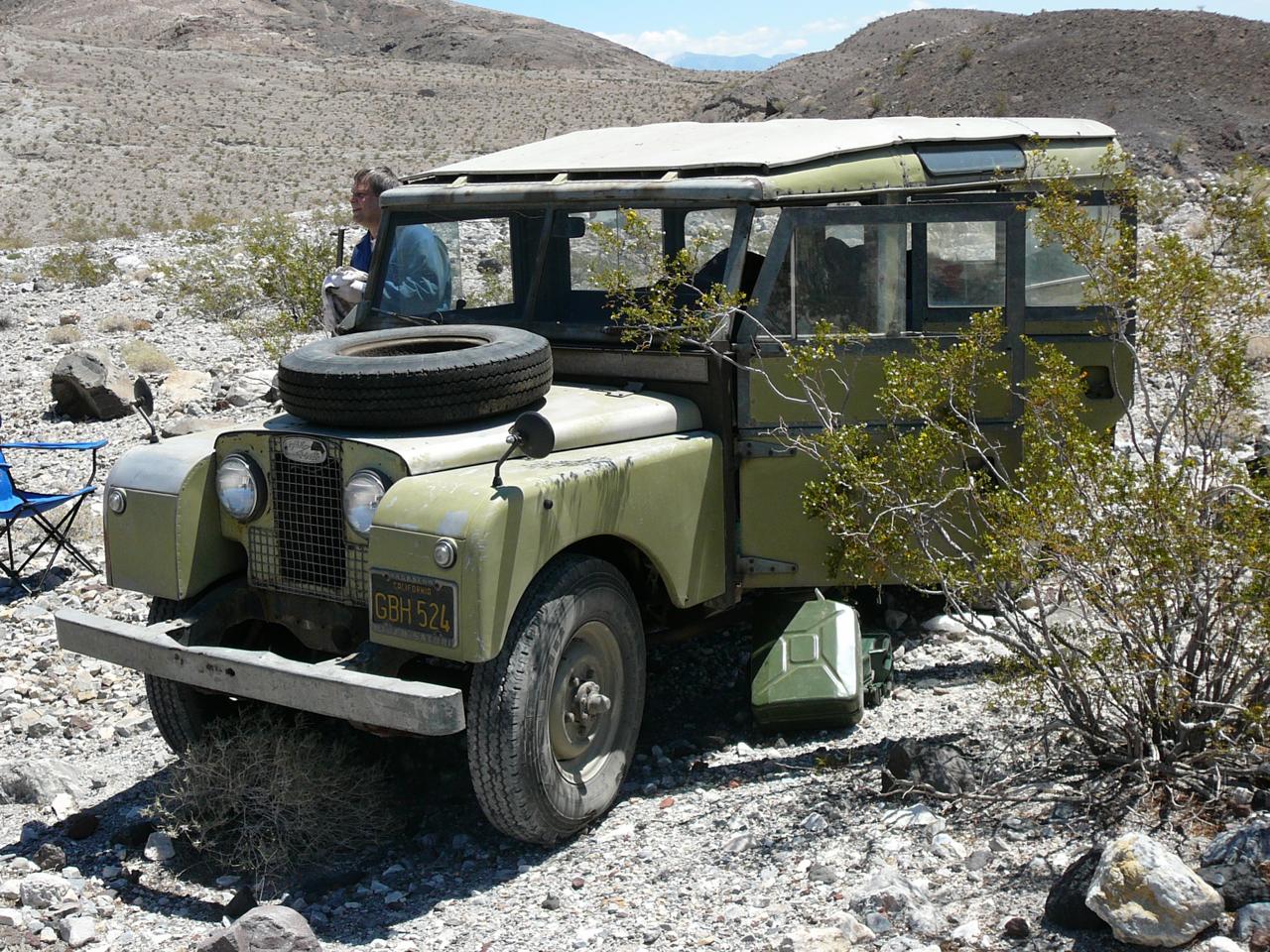
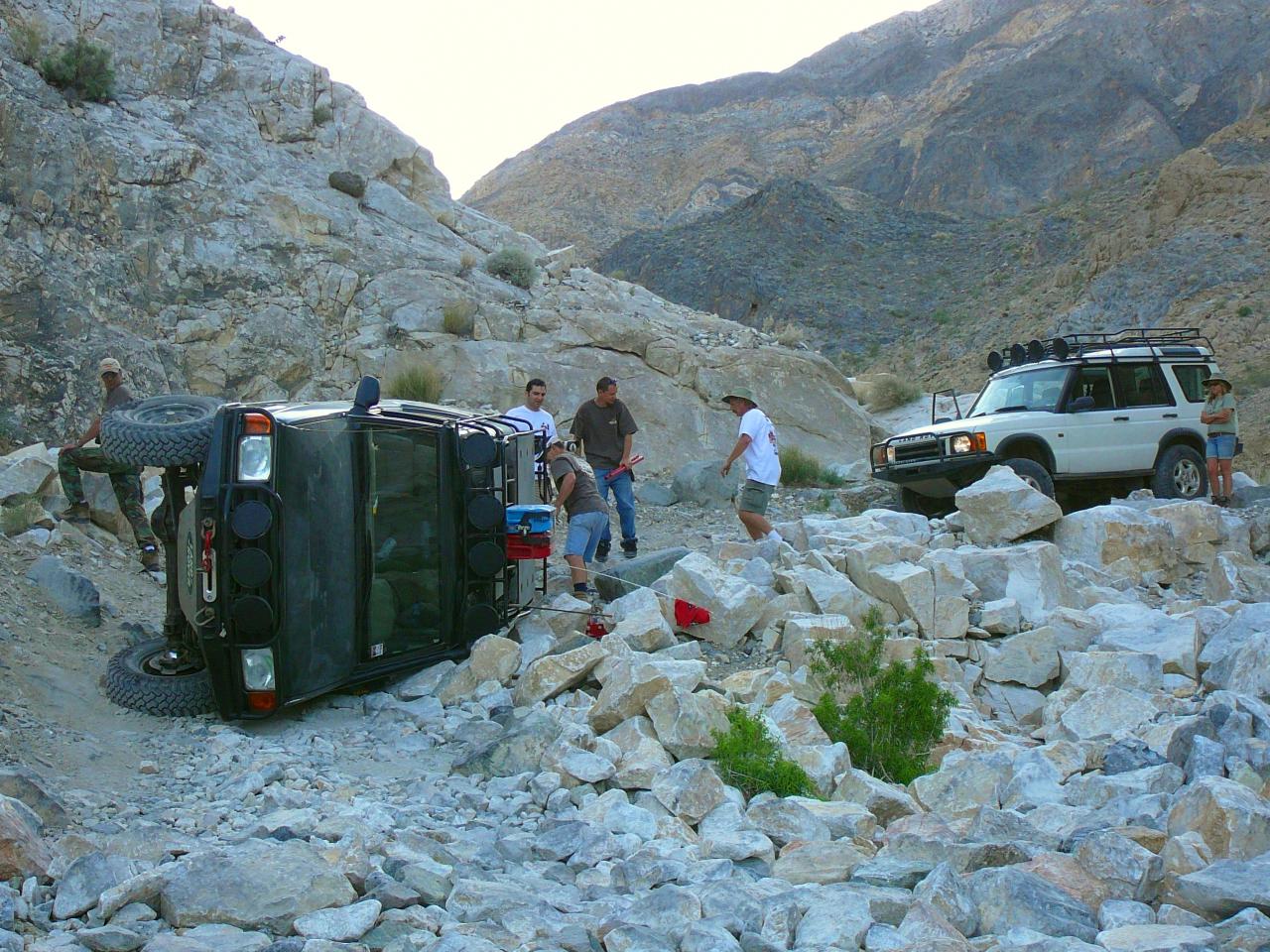
This, by the way, was also in Death Valley:
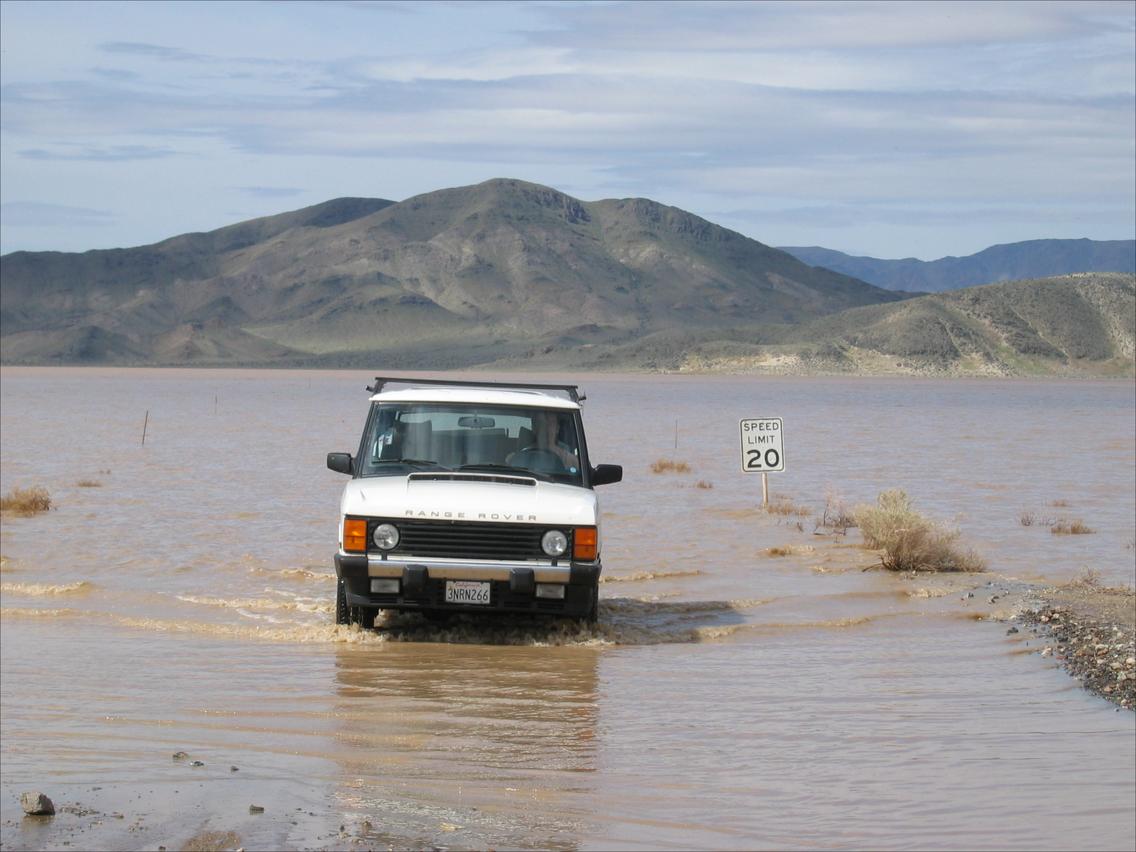
To sum it up... Of course, help will eventually come to the owner of a satellite beacon or telephone or a ham transceiver. But if you don't have any of that, you need to ask yourself a few questions - do I know well where to hike should things break? Am I in a good shape, physically or equipment-wise, for a twenty-five to thirty-mile hike? Or do I have enough stuff to keep myself alive until somebody else shows up?
Death Valley should be treated with respect.
Enough of a rant.
Last time we've achieved this state rather quickly, right after we completed the Rubicon trail. We were too tired to even contemplate going out for dinner, so we gravitated to the patio of a motel in Lee Vining, with beer and bourbon and whatnot, and fell into this groove in about an hour and a half. The only bright idea we could come up with was to repeat a weekend trip to Death Valley.
It should be said that my poor old gal of a Land Rover was not quite ready for new adventures after the 'Con. At least a couple of full weekends was put in towards rectification of things small and large, but eventually the road fever overcame the more-traditional weekend entertainment (like extra work).
Text messaging lit up.
- Let's go to Death Valley.
- When?
- In a couple of weeks.
- Ten-four. Any particular route?
And so on. At a certain point I remember that I probably should let my folks know that I might not be home for a couple of nights. And out of reach by cell phone. Yes, I will take the dog with me. Yes, we plan on sleeping in a tent. No, it won't be too cold. It won't be too hot, either. Spare parts and tools are still in the truck since Rubicon, no need to pack anything else.
Kind of like that.
I take the lack of promises to return to an empty house as a permission, and ponder the trip plan. Here's the disposition: we have three days total - taking off early Friday morning, have to be home by Sunday night come hell or high water. All there's to drive - about a thousand miles, out of which about 220 are off pavement (to be more precise, a grueling Death Valley washboard and rocks). This particular 220-mile stretch requires about 20 hours to drive, give or take, some of it requires low range, with altitudes ranging from about sea level to about 10 thousand feet above. Both vehicles are V8-powered Land Rovers with automatic transmissions, and there is not a single gas station on this route.
The last consideration bothers me a bit. Even after some effort to rein in gas consumption, I am not sure if that truck can idle for 20 hours on a tankful of gas, let alone to move under its own power. I own many five-gallon jerry cans, but a Discovery is not a very large vehicle, when two adults and a large dog are concerned.
We'll figure something out.
In addition to that, one of my good friends plans to cover the same route on his KTM bike, North to South - meaning I chose the South to North direction to make sure we meet. The fact that we plan on meeting in a desert spanning a little more than three thousand square miles doesn't bother me a bit. As long as we avoid paved roads, we'll meet.
Finally, I kiss my wife goodbye and hit the road.

A little rant about Death Valley.
This is a comment to Death Valley-related trip report on one of the Internet bulletin boards, loosely translated from Russian:
Of course, Death Valley is no Atacama. Yet there are things to consider when one leaves pavement.Oh folks, a location that has air-conditioned toilets can hardly be called Death Valley.
- 13 years ago on North Death Valley Road, in my Range Rover Classic the left rear brake dust shield worked itself loose, crumpled and jammed itself between one of the axle brackets and brake caliper. Fortunately, it didn't damage any of the brake lines. For this to happen, two 8-mm nylock nuts had to work themselves down about 10mm of thread - it only took 20 miles of washboard. Oh yes, and within two hours of this event we were under heavy snowfall at about 6000 feet above sea level. All on the same road.
- 11 years ago, on the same North Death Valley Road, we've watched a Chevy pickup depart Eureka Dunes area, with a couple and two dogs, and I caught myself thinking (a) this was likely the last vehicle on the road for at least the night, and (b) we only had about half a gallon of drinkable fluids for three of us, and two-thirds of that was wine. I filed away this thought and drove on. In about six miles we met the couple in the Chevy again: their auxilliary engine oil cooler hose worked itself lose, they missed the oil pressure warning light, and the engine seized. We ended up rope-towing them to the ranger shack about 25 miles away; fortunately there was a park ranger in it. At the time, there was no cell phone service pretty much anywhere in the Valley. Next morning, as if on purpose to reinforce the lesson, my Land Rover's lower radiator hose sprang a leak.
- 9 years ago we worked at the Southern half of China Lake Weapons Range, one mountain range away from Death Valley, and about an hour and a half drive from Ridgecrest. We decided to leave the engine running while we did our work at the site, to keep the cabin cool. Returned to Inyokern, and went for lunch. After lunch the engine wouldn't start - the battery showed about 5 volts across its terminals. Apparently, all these miles on the washboard shook the active layer off the battery's plates - the battery was completely dead and unchargeable.
- This time we met a sad owner of a diesel Ford Excursion with two very dead batteries at the Racetrack Playa - without cell phone service, about 20 miles from pavement and at least 100 miles from the nearest service station. The owner and his young son were on the fence of whether to spend a cold night inside the truck or hit a button of a satellite beacon so they could summon some very expensive help.
In this respect, we are lucky by only having one broken OME shock absorber (five months old, on a suspension with tall bumpstops and retained spring - so it has never been stretched or bottomed out). Whatever's good for Australian outback may not be good enough for Death Valley.
Here are some photos from our past trips to the Valley:


This, by the way, was also in Death Valley:

To sum it up... Of course, help will eventually come to the owner of a satellite beacon or telephone or a ham transceiver. But if you don't have any of that, you need to ask yourself a few questions - do I know well where to hike should things break? Am I in a good shape, physically or equipment-wise, for a twenty-five to thirty-mile hike? Or do I have enough stuff to keep myself alive until somebody else shows up?
Death Valley should be treated with respect.
Enough of a rant.
